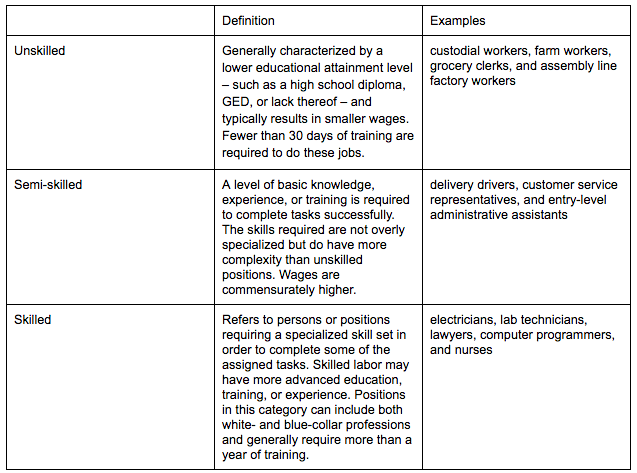The Plight of the Promotion: What’s Stopping People From Moving Their Careers Forward?

In our world of infinite information, it’s remarkable that nearly half of working adults say they have been unable to progress in their careers due to a lack of skills training or certifications. Massive open online courses (MOOCs), boot camps, YouTube – the list of places where you can find quality training content inexpensively and conveniently gets longer every month.
Yet employees feel stuck, unable to achieve their career aspirations due to a lack of training. Meanwhile, the U.S. has a surplus of skilled jobs and a shortage of high-skilled workers.
Don’t get me wrong: Millions of Americans are getting retrained and learning new career skills as we speak. As the CEO of Wyzant, I have a front row seat to this trend. However, jobs data suggest that we are not retraining the workforce fast enough. Based on what I’ve observed, I have a few ideas for explaining and solving this disconnect.
First, let’s get our terminology straight. According to Investopedia, there are several categories of labor. Reminiscent of chocolate, these include “unskilled,” “semi-skilled,” and “skilled.” The following chart provides definitions and examples for each:

The U.S. economy is at the beginning of a major transformation, as automation and artificial intelligence replace many unskilled and semi-skilled jobs alongside an explosion in demand for certain skilled jobs. For example, according to the Bureau of Labor Statistics Occupational Outlook Handbook, the number of nursing jobs is projected to grow at 16 percent over the next seven years, while software development jobs are expected to grow at 17 percent. On the flip side, assembly line jobs are projected to decline at 1 percent per year, and agricultural worker jobs are projected to decline at 6 percent per year.
What gives? With all the online training literally at our fingertips, why are we failing to adapt quickly enough to the supply and demand of jobs? It’s certainly not a lack of information, so what keeps people from reskilling and upskilling to stay relevant in today’s knowledge economy?
First of all, learning is hard. It requires time and perseverance, and it can be uncomfortable. In fact, research suggests that learning is supposed to be hard. It’s a lot like fitness. For some people, staying fit is second nature. But for many of us, eating healthy and exercising consistently are major challenges. When it comes to learning, some people have a gift and can soak up new skills and information like sponges, whereas others struggle to stay focused and committed. When it comes to learning, the more you challenge and push yourself, the better the results – just like working out. As a species, we are inclined to avoid discomfort, and learning falls into that category for a lot of people. So put on your sweatband and get to work!
The second barrier we see in reskilling the workforce is the difference between academic or theoretical learning and the ability to apply those skills in practice. Many of the professional learners who turn to Wyzant have already “learned” the material in an academic sense through a course or other online program, but they are now stuck trying to apply it to a project or position at work. Ultimately, companies need to take responsibility for this hands-on training. Employees may have the right tools on their tool belts, but they still need to practice using them. Working with a mentor, coach, or tutor is another way to gain practical experience, sort of like the modern version of apprenticeship.
Another common theme we hear from professionals who are struggling to advance their careers is that they were “bad at school” and therefore lack confidence to develop their abilities as adults. In many cases, people carry this scar tissue through their entire lives. Education reform can help, especially the implementation of personalized learning and teaching a growth mindset.
The next reason for the talent gap is that many people don’t know where to start, although not for a lack of options. Do a Google search for “learn to code” or “become a nurse,” and you’ll quickly realize that the plethora of information and options available, while overall a net positive, can also create a paradox of choice. This is your career, after all, and people certainly don’t want to choose the wrong path forward.
The $107 billion online learning market is enormous. Between degree programs, MOOCs, video content platforms, boot camps, continuing education, and tutors, it’s seriously overwhelming, even for someone who has been in the education space for 12 years.

When push comes to shove, one of the biggest barriers to pursuing career training is cost, with approximately 45 percent of survey respondents noting that money was holding them back from getting additional career training.
It is true that the cost of traditional education options is skyrocketing. The average cost of a graduate degree grew by more than 43 percent between 2008 and 2012, according to a 2014 policy brief from the New America Education Policy Program. As noted earlier, many of the lower-cost or free options available aren’t effective for all learners and don’t provide the necessary hands-on experience.
My suggestion here is twofold. First, employers can do more to invest in their employees and subsidize formal training programs. Second, employees need to be scrappy and take advantage of free resources to acquire new skills. Based on what I’ve observed at other companies and certainly at Wyzant, what matters is what you know, not how you learned it or the degrees and certifications on your resume. If money is holding you back, look outside the box.
I’m sure you’ve heard how turnover has skyrocketed, especially among millennials. It would follow that companies may be hesitant to invest as heavily in employee training as they used to. Who wants to invest in training an employee who is likely to take those skills to another company – maybe even a competitor? Lies, lies, lies! Turns out this is a myth : Job tenure today is higher than it was 25 years ago!
Competition for skilled employees is through the roof, so companies need to be proactive and strategic about keeping their best people and developing junior talent in house. The reality is that your chances of maintaining high performers are significantly higher if you invest in their development than if you don’t. Will some of them leave after you’ve invested in them? Probably. But on the whole, in a competitive environment, the companies that give their employees the best training and growth opportunities will have an advantage.
Drew Geant cofounded Wyzant in 2005 with his Princeton classmate, Mike Weishuhn.

